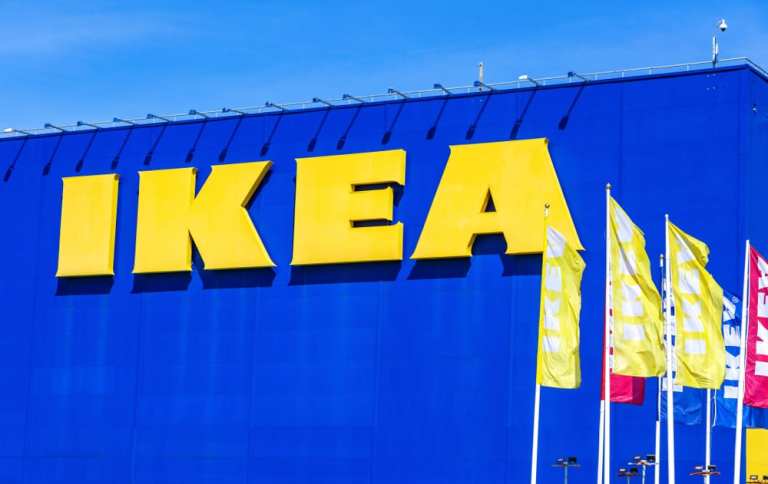
One of the basics of platform design and ignition is getting “anchor tenants” on board who — given their size, scale and profile — tend to attract other stakeholders to the platform. What’s not as common is for an anchor tenant to acquire a platform to further scale its own business, and create an entirely new ecosystem in the process.
That’s exactly what happened when Swedish retailer IKEA bought TaskRabbit in September 2017. It was the first acquisition of its kind by the company in the United States, Ikea’s second-largest market behind Germany. Sarah Rose, president and chief product officer at TaskRabbit, told Karen Webster that the acquisition stemmed from Ikea’s decision to up its digital and services offering, and add value to its customers.
TaskRabbit is a gig economy platform that matches “Taskers” with people who need handiwork done for variety of household chores and repairs. One of the many services on that list was assembling furniture bought from IKEA.
As an extension of IKEA’s retail offering, Taskers can eliminate any impediments to making a sale, given concerns about assembling furniture once it gets home. However, Rose told Webster, the services provided by Taskers go well beyond that, and are consistent with the TaskRabbit’s core mission of home inspiration — whether that’s helping consumers create an art wall, install new light fixtures, rearrange a room after furniture purchases have been made, or redo the kitchen or bathroom.
“We are at a very exciting life stage for the company,” Rose said during a discussion that not only served as an update on TaskRabbit, but a look at the current gig economy landscape. “We are in a period of rapid growth.”
Retail As Key Demand Driver
The mash-up of retail anchor tenants and gig platforms that brings the supply and demand of Taskers together points to a fuller vision of how a gig platform can fit into the larger retail ecosystem — as well as ignite and scale one centered on the home. That vision speaks to larger trends in commerce and payments, not just the rise of the gig economy. As Webster discussed, recent PYMNTS research has found significant increases in the time people spend at home, because connected devices make it possible for more people to do from home what they used to do outside of the home — whether that’s watching a live sporting event or movie, eating takeout from a restaurant or shopping online.
“We want to be an entry point in a much larger ecosystem,” Rose said.
How to do that? In large part, the IKEA deal was the door leading to that desired ecosystem. The idea is to whip up demand for the platform’s Taskers via such retailers, which essentially function as large-demand aggregators with Taskers who have the time and skills to help. It’s a strategy that will include TaskRabbit working with more large-demand aggregators.
“There are some great synergies we can find between those vertical players and TaskRabbit as a whole,” she said.
As Rose told it, one job can lead to another, and serve to build the ecosystem. For instance, a Tasker might get introduced to the platform via IKEA, and may end up doing one job, then be hired in the future for other gigs.
“Interest is high in shopping for that IKEA couch,” Rose added.
The platform has a robust ratings-and-review system, and that can not only help consumers find new Taskers, but promote customer loyalty.
New Retail Partnerships
The Tasker universe promises to keep growing via new retail partnerships, such as the one with Ikea. For instance, TaskRabbit recently announced a program under which its Taskers will pick up and deliver — sometimes on the same day — goods donated to Goodwill.
“After the Tasker drops off the items, donors will receive an email with directions on how to obtain their donation receipt, and other ways to support Goodwill NYNJ,” the company said in a statement.
To promote this new service, TaskRabbit is offering first-time users a $10-off discount offer. The program has kicked off in New York and New Jersey, and represents a fresh area of interest for TaskRabbit.
“We have a service business that leverages TaskRabbit to perform all types of [tasks] for other businesses,” Rose told Webster. As for Goodwill, “this really speaks to the idea of giving people a helping hand,” she said, talking about one of the main values behind TaskRabbit.
That value extends to Taskers as well. Some Taskers, in fact, take jobs via the platform because they are not willing or capable of working traditional schedules in traditional settings. Flexibility is key for Taskers, and a key part of its value. For instance, Rose told of one Tasker who suffers from a medical condition that makes it difficult for her to maintain a 9 a.m. to 5 p.m. job. Being a Tasker allows her to participate in the workforce, earn a living, and accommodate her need for rest and downtime.
Payments Opportunity
Now, TaskRabbit enjoys what Rose called financial sustainability, as it works with Ikea to grow in markets outside the U.S., and keep adding more Taskers and consumers who need it. Taskers pay a fee to be listed on the platform, but take home the entire income earned via the rates they sent. Consumers pay a fee to use TaskRabbit.
Paying Taskers more quickly as tasks are completed is something the company is currently exploring. Though Rose said that the company still works with a good number of Taskers who’ve been around since before the IKEA days, better and quicker payments can go a long way to making a gig workforce even more loyal to a particular platform.
Indeed, to hear Rose talk is to imagine another, more mature phase of the gig economy — one that will make more use of retail partnerships and home-centric consumers in the new decade that’s just about to start.